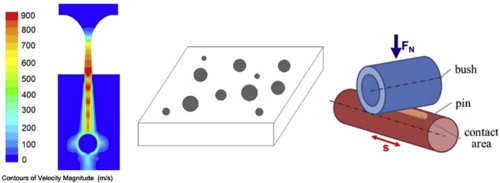- Volumes 84-95 (2024)
-
Volumes 72-83 (2023)
-
Volume 83
Pages 1-258 (December 2023)
-
Volume 82
Pages 1-204 (November 2023)
-
Volume 81
Pages 1-188 (October 2023)
-
Volume 80
Pages 1-202 (September 2023)
-
Volume 79
Pages 1-172 (August 2023)
-
Volume 78
Pages 1-146 (July 2023)
-
Volume 77
Pages 1-152 (June 2023)
-
Volume 76
Pages 1-176 (May 2023)
-
Volume 75
Pages 1-228 (April 2023)
-
Volume 74
Pages 1-200 (March 2023)
-
Volume 73
Pages 1-138 (February 2023)
-
Volume 72
Pages 1-144 (January 2023)
-
Volume 83
-
Volumes 60-71 (2022)
-
Volume 71
Pages 1-108 (December 2022)
-
Volume 70
Pages 1-106 (November 2022)
-
Volume 69
Pages 1-122 (October 2022)
-
Volume 68
Pages 1-124 (September 2022)
-
Volume 67
Pages 1-102 (August 2022)
-
Volume 66
Pages 1-112 (July 2022)
-
Volume 65
Pages 1-138 (June 2022)
-
Volume 64
Pages 1-186 (May 2022)
-
Volume 63
Pages 1-124 (April 2022)
-
Volume 62
Pages 1-104 (March 2022)
-
Volume 61
Pages 1-120 (February 2022)
-
Volume 60
Pages 1-124 (January 2022)
-
Volume 71
- Volumes 54-59 (2021)
- Volumes 48-53 (2020)
- Volumes 42-47 (2019)
- Volumes 36-41 (2018)
- Volumes 30-35 (2017)
- Volumes 24-29 (2016)
- Volumes 18-23 (2015)
- Volumes 12-17 (2014)
- Volume 11 (2013)
- Volume 10 (2012)
- Volume 9 (2011)
- Volume 8 (2010)
- Volume 7 (2009)
- Volume 6 (2008)
- Volume 5 (2007)
- Volume 4 (2006)
- Volume 3 (2005)
- Volume 2 (2004)
- Volume 1 (2003)
• Microscale titania particles were bonded to case hardened steel pins using cold spraying.
• CFD simulation was used to get a better understanding of the process.
• Hardness of the structured chain pins was not decreased during cold spraying.
• Friction coefficient of the structured chain pins decreased significantly.
• Surface structure and chemistry of the particle structured pins were characterized.
This paper presents the results of the application of a cold spray technique for structuring metallic surfaces with microparticles. The resulting changes in surface properties were characterized to observe their influences on the tribological behavior of the structured surface. The spray technique was applied to a technical component, a 16MnCr5 steel chain pin, designed to be mounted in a linear reciprocating tribometer. TiO2 microparticles were used to structure the surface with a homogeneous distribution of singly dispersed particles, rather than a homogeneous closed coating on the surface. Tribometer tests were performed to directly compare structured and unstructured chain pins, and a significantly reduced sliding friction coefficient was observed for the structured pin. The pins were characterized in detail by surface analysis prior to and after application of the tribological load to set the surface parameters and surface chemistry, even on the microscale. It was confirmed that the particle structuring induced changes in the surface properties, and the durability of the changes after tribological loading was evaluated.

